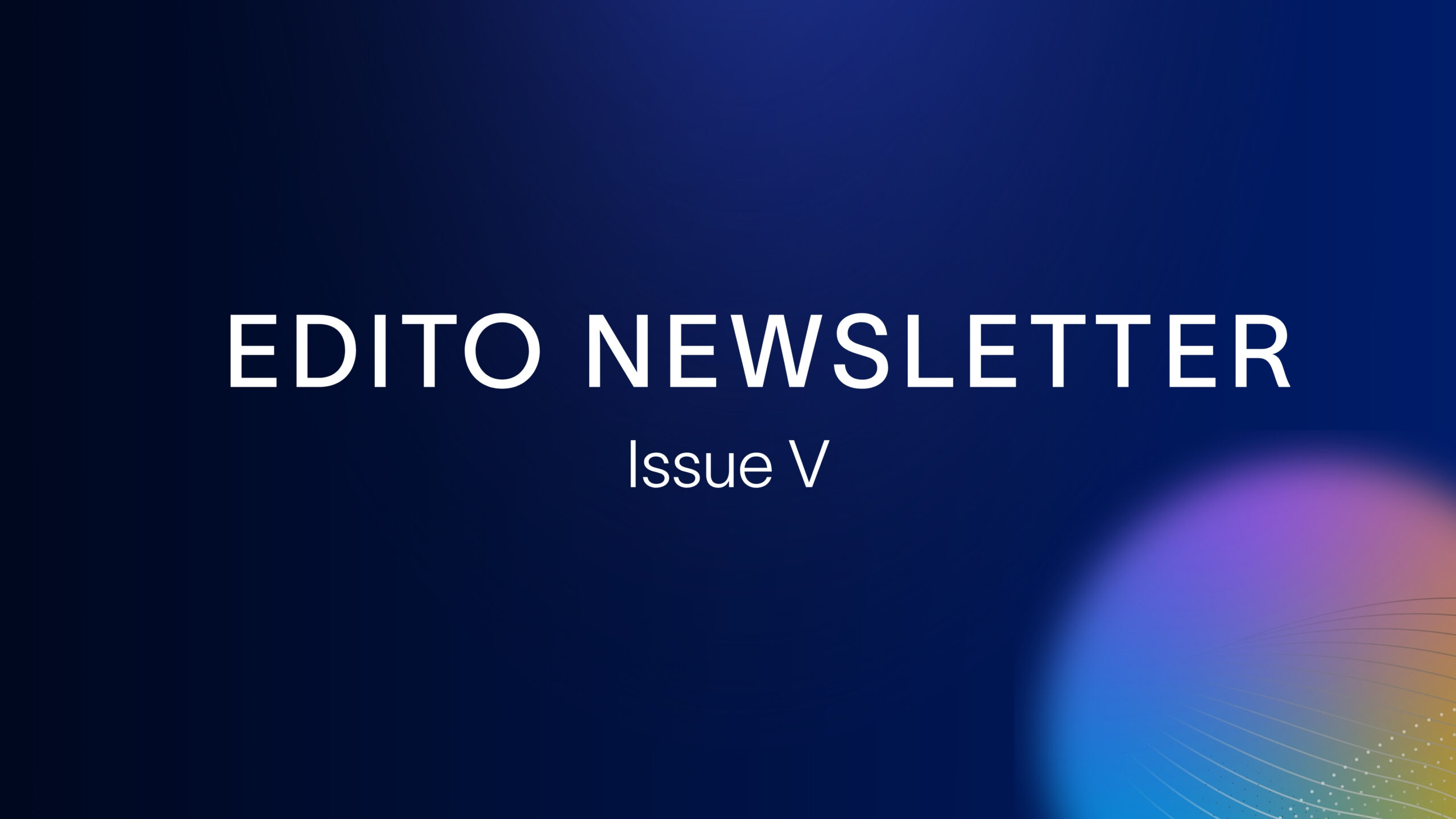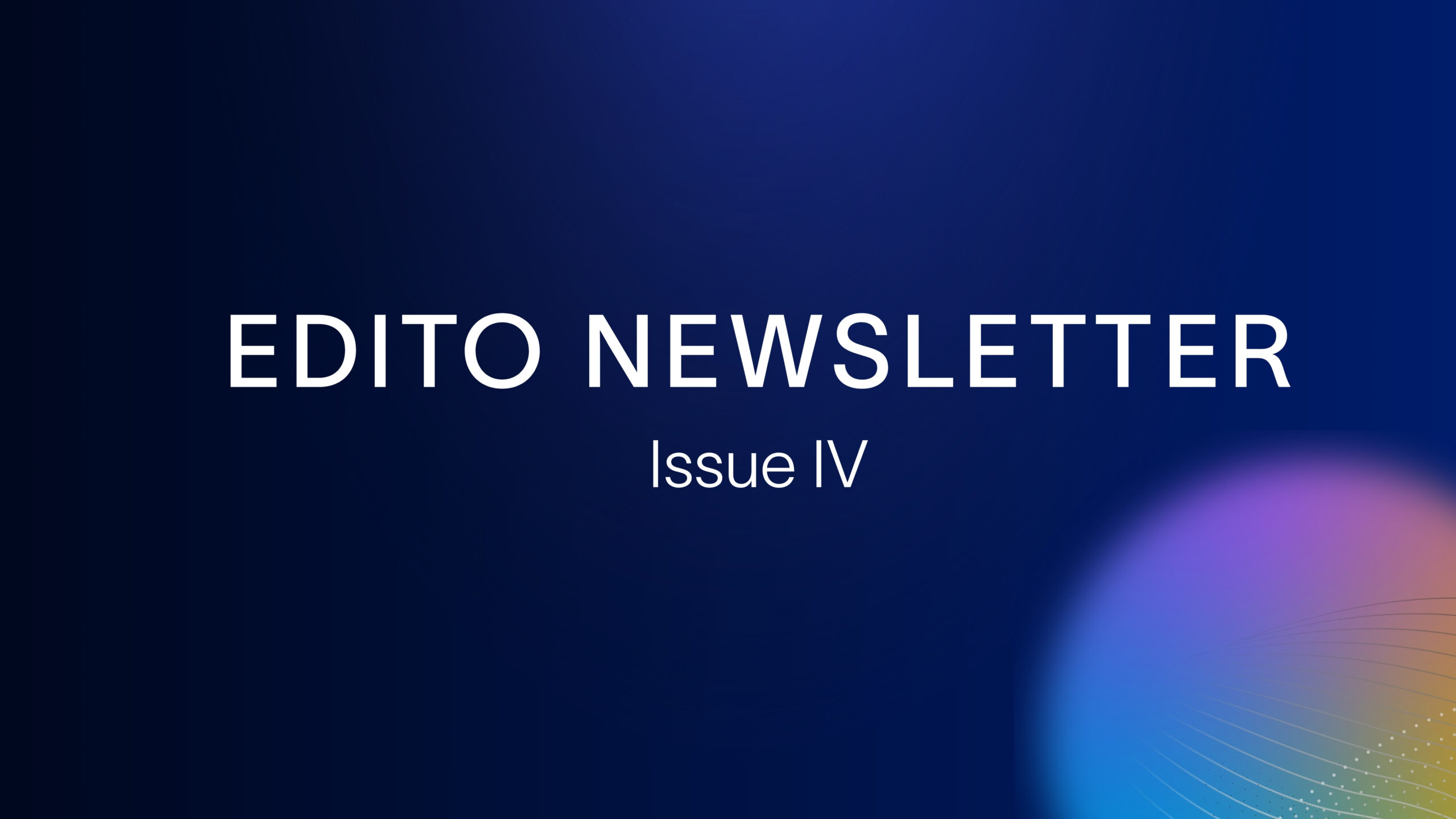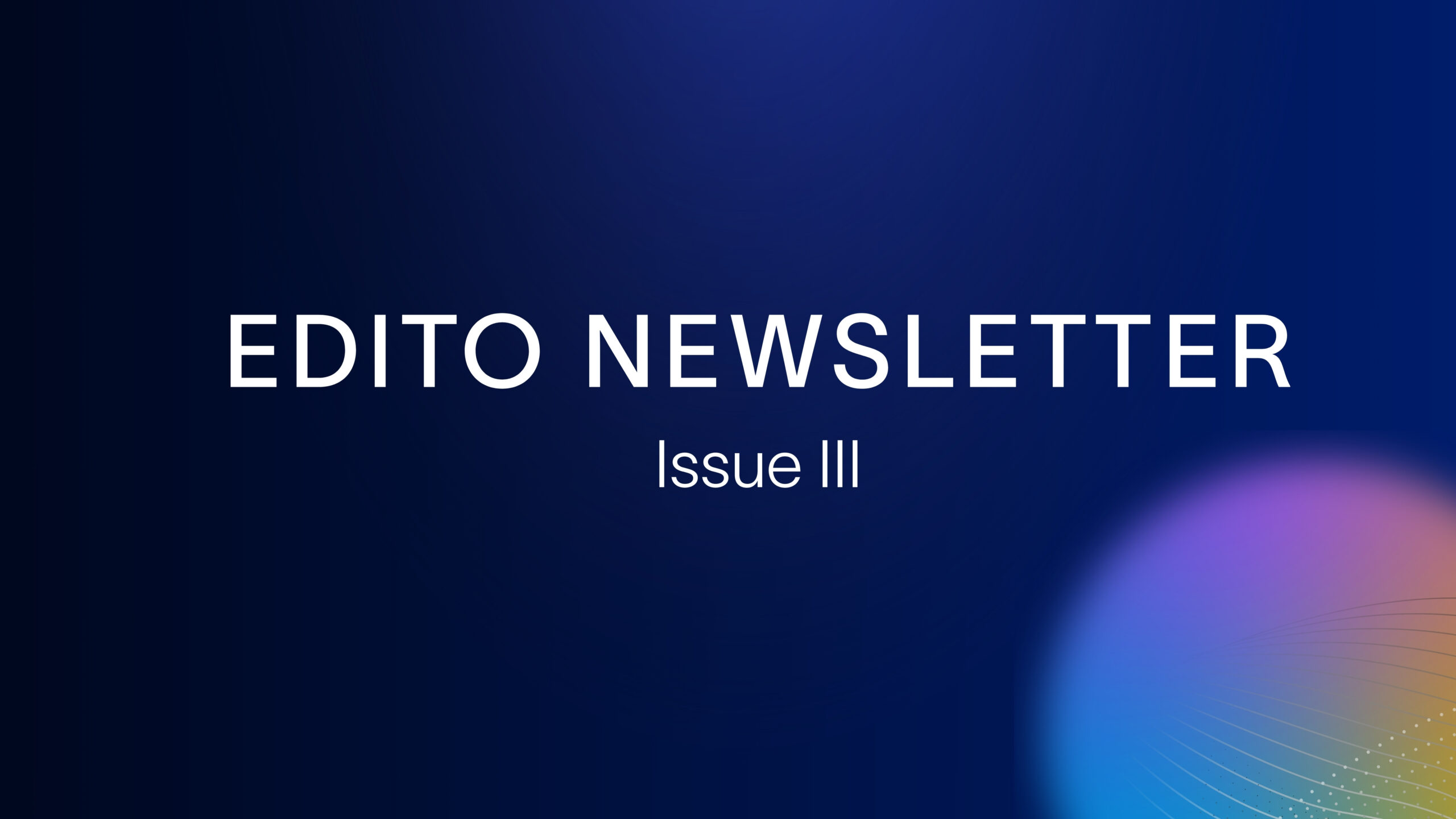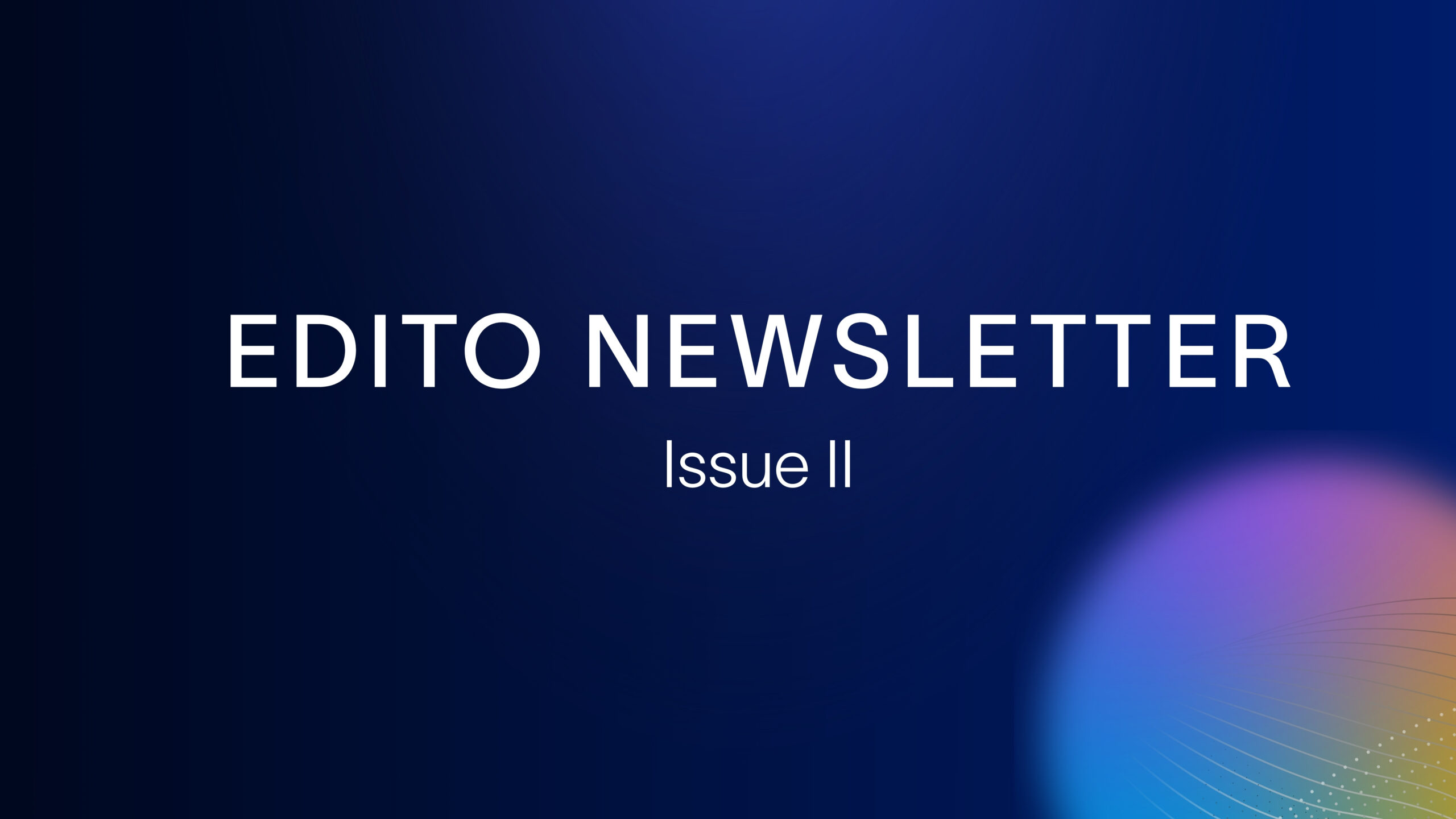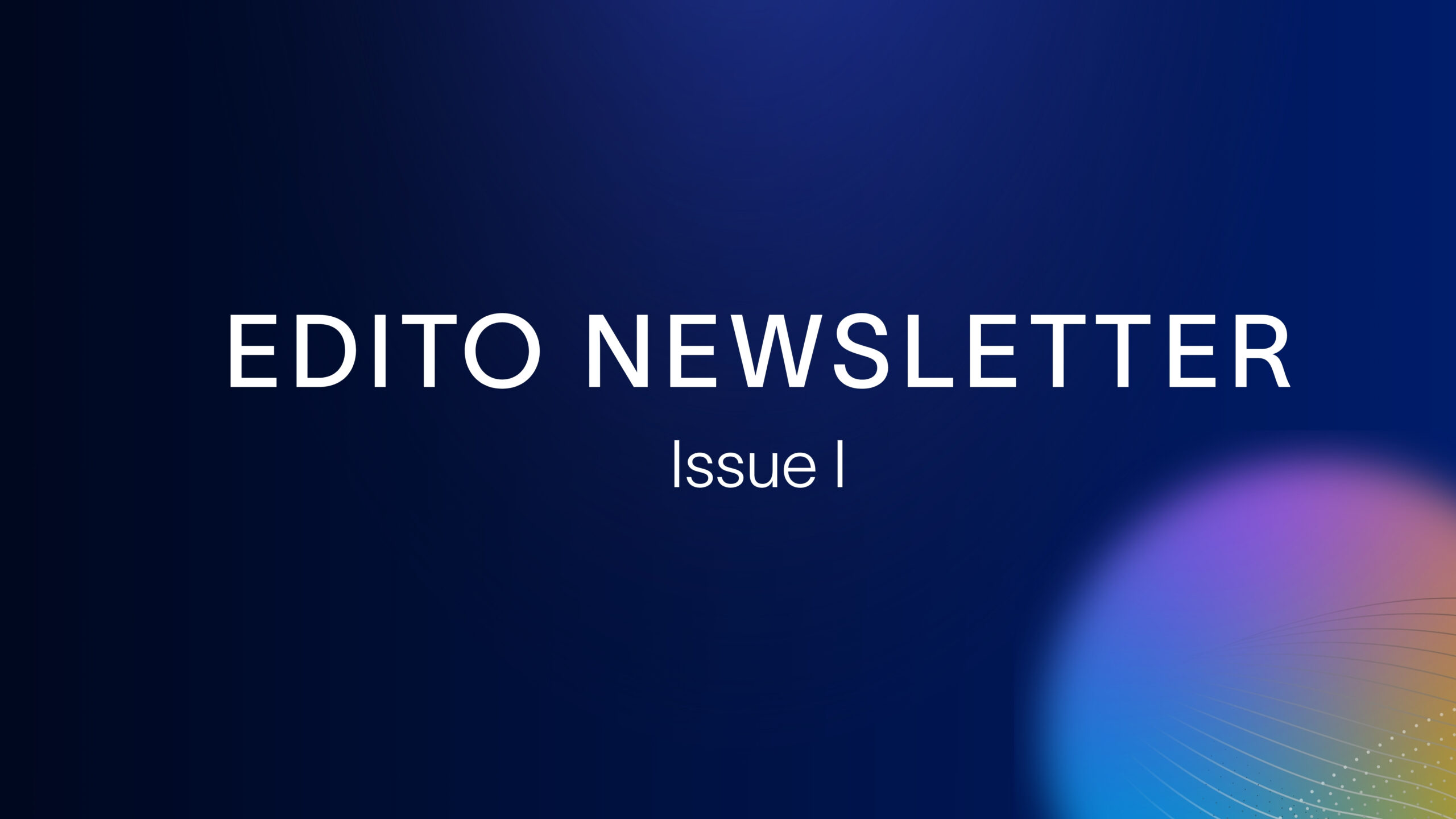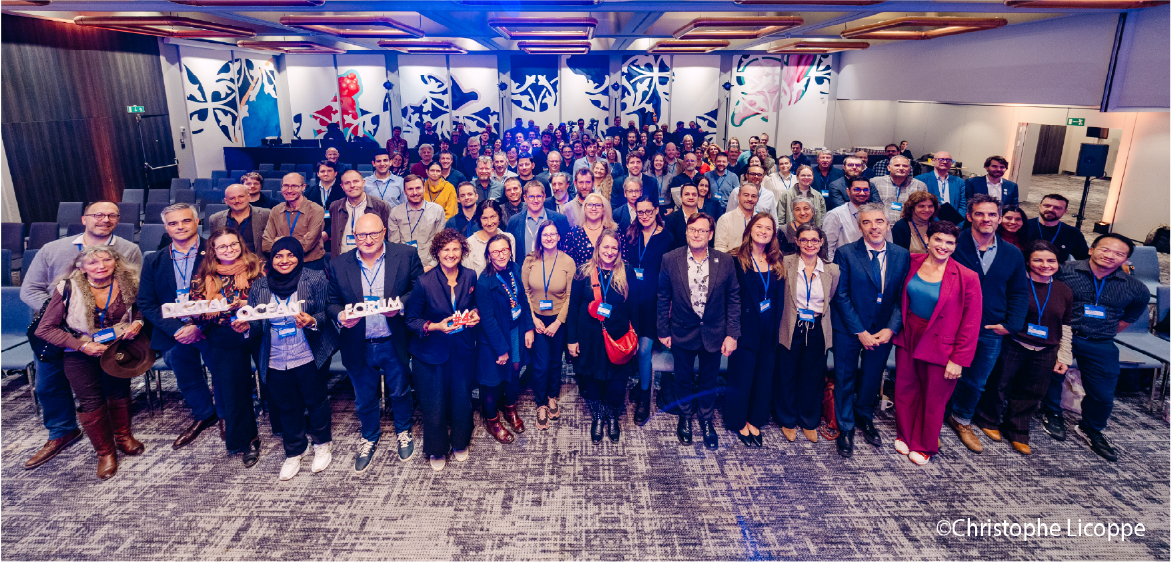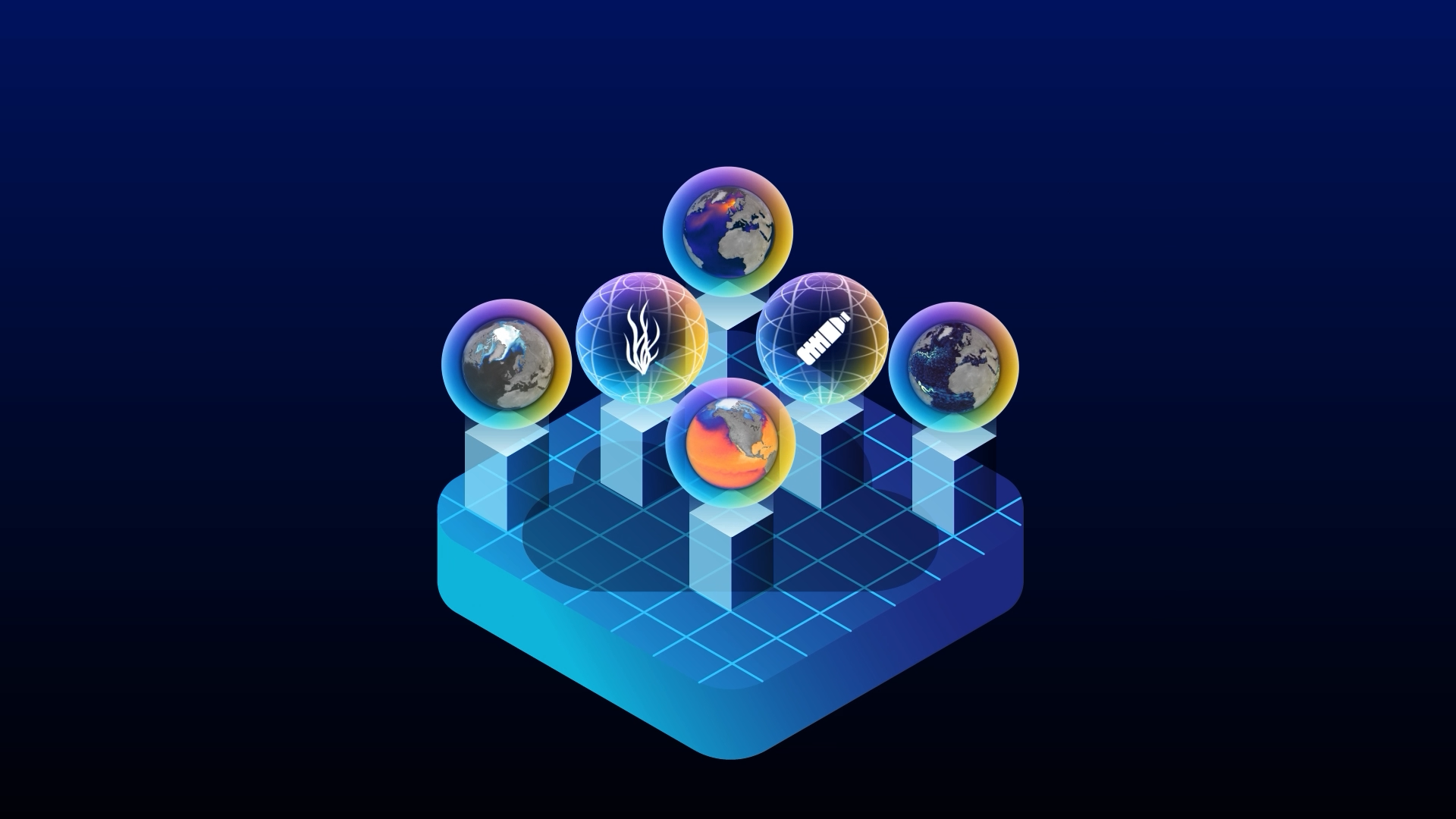Newsletter
October 21, 2025
Newsletter V – October 2025
EDITO serves as the public infrastructure of the European Digital Twin Ocean, funded by the European Union. Our mission is to make ocean knowledge available to all, empowering decision-makers, researchers, innovators and citizens to access a wealth of ocean insights and tools, grow our shared knowledge, and act for the future. …
May 1, 2025
Newsletter IV – May 2025
Meet EDITO at the UNOC 2025 ISSUE IV | May 2025 To the EDITO Community We’re delighted to reconnect with you with a fresh update on our shared effort to make ocean knowledge accessible to all. As momentum builds around the European Digital Twin Ocean platform (EDITO), we’re proud to reflect on…
July 1, 2024
Newsletter III – July 2024
Unveiling the European Digital Twin Ocean: A DOF 2024 Recap ISSUE III | July 2024 Welcome to another edition of the EDITO newsletter! In this issue, discover highlights from the third edition of the Digital Ocean Forum (DOF), held in Brussels (Belgium) on 12-13 June 2024. A flagship event for the European Digital…
April 1, 2024
Newsletter II – May 2024
EDITO Newsletter ISSUE II | May 2024 In this issue: EDITO at the UN Ocean Decade Conference Upcoming opportunities to engage with EDITO EDITO at the European Maritime Days 2024 Gearing up for the Digital Ocean Forum 2024 EDITO’s latest developments for optimised experience and broader capabilities Read about EDITO’s involvement…
January 6, 2024
Newsletter I – January 2024
Happy New Year From EDITO ISSUE I | January 2024 As we welcome the new year, we are thrilled to highlight EDITO’s key achievements in 2023 and share upcoming milestones and events towards the co-creation of the European Digital Twin Ocean (EU DTO). Our teams, working on Horizon Europe projects EDITO-Infra…
About the author

Proin volutpat vitae libero at tincidunt. Maecenas sapien lectus, vehicula vel euismod sed
Categories
Popular Posts
Instagram
Follow us
